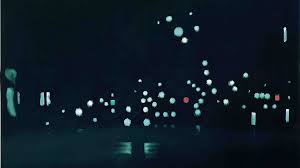Barry Schwabsky at The Nation:
 As far as painting goes, Katz attributes his awareness of an uptown/downtown dichotomy to Edwin Denby, the great dance critic and poet and friend of painters, who wrote that downtown was where “everybody drank coffee and nobody had shows.” In the 1940s, Katz recalls, Surrealism (with its tony European pedigree) was the uptown choice in new painting, and Denby would have agreed: “Tchelitchev was the uptown master,” he wrote. The soon-to-be Abstract Expressionists—Pollock, de Kooning, and company—were still haunting the coffee shops and automats of the Village; their successors of the 1950s and early ’60s were recently chronicled in a 2017 exhibition at New York University’s Grey Art Gallery, “Inventing Downtown: Artist-Run Galleries in New York City, 1952–1965,” in which Katz was, of course, also featured.
As far as painting goes, Katz attributes his awareness of an uptown/downtown dichotomy to Edwin Denby, the great dance critic and poet and friend of painters, who wrote that downtown was where “everybody drank coffee and nobody had shows.” In the 1940s, Katz recalls, Surrealism (with its tony European pedigree) was the uptown choice in new painting, and Denby would have agreed: “Tchelitchev was the uptown master,” he wrote. The soon-to-be Abstract Expressionists—Pollock, de Kooning, and company—were still haunting the coffee shops and automats of the Village; their successors of the 1950s and early ’60s were recently chronicled in a 2017 exhibition at New York University’s Grey Art Gallery, “Inventing Downtown: Artist-Run Galleries in New York City, 1952–1965,” in which Katz was, of course, also featured.
The latitude with which Katz employs the uptown/downtown distinction eludes geography. Several of the artists in the show were never associated with any part of New York or even with urban life in general. For instance, Marsden Hartley, who is more easily associated with his native Maine, was represented in “Downtown Painting” by New England Sea View—Fish House, 1934, one of only two works on view from before the 1950s.
more here.
